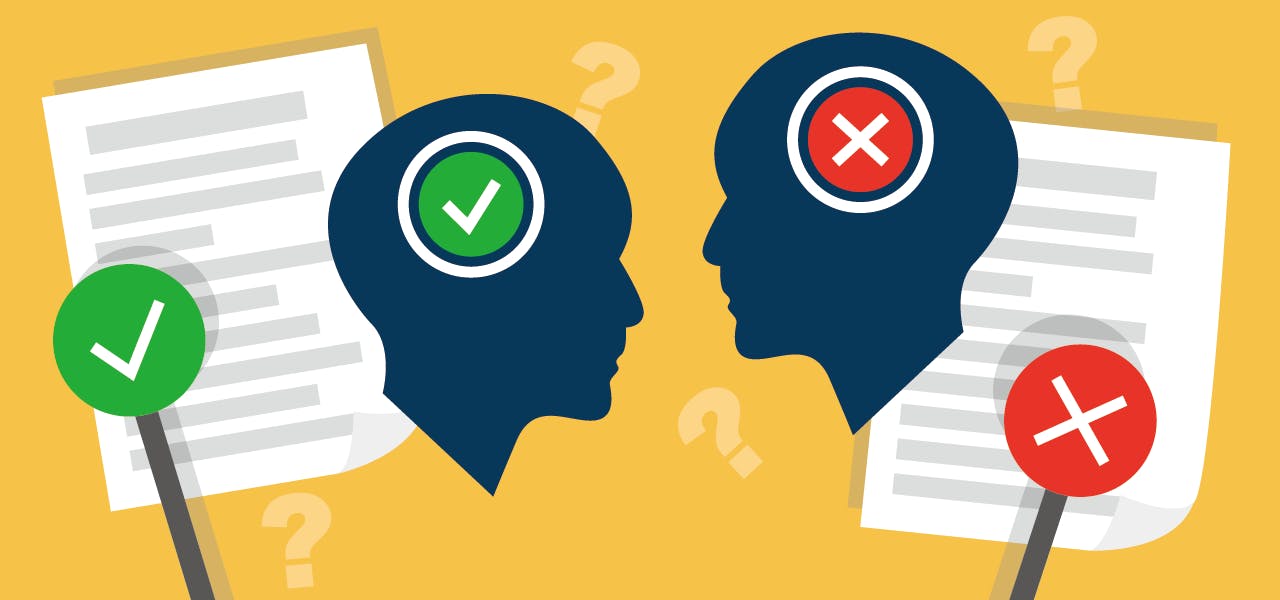The scholastic landscape is the place that everyone knows they can turn to for verifiable answers because it’s a neutral playing field. To continue this reputation, all research must remain unbiased or one skewed article can disparage the entire academic community’s standing. The problem with this is that sometimes biases are implicit and hidden even from the researchers themselves.
One of the most common forms of bias is known as ‘selective reporting.’ It’s an act of omitting data that doesn’t seem significant, but without a full analysis of why the researcher chose that particular set of data to eliminate, there could be underlying bias going on. Scholars must always be aware of and alert for instances of potential bias in their work, especially when selective reporting could occur, and work towards purposely avoiding all bias in their research findings.
Types of Biases
In order to prevent bias in your research, you must first be aware of the different ways in which this deneutralizing factor can sneak up on you. The main types of bias in the academic landscape include:
● Design bias - This bias begins as the research team creates the process in which the experiment will be performed. If there isn’t a wide enough selection of demographics and a large enough population in the data pool, design bias could exist. This is where selective reporting also sneaks in. If a population of people are omitted that could be affected by the study, the final outcome could be invalid.
● Procedural bias - After the design is approved, the procedures can begin to be implemented. During this time, procedural bias can occur when a researcher decides that the next step in an experiment should go a predetermined way, whether the results of the previous step demonstrate that direction or not. This frequently happens when the researcher is rushed, a time limit is in place, resources and funds have to be considered, or faulty equipment is used.
● Personal biases - The most difficult types of biases to avoid are personal biases because they are part of the researcher’s character the scholar may not even realize they exist. Personal bias influences data collection when the interviewer is unconsciously or purposely using body language to get the respondent to answer a question in a certain way, or they can occur when the researcher is determining the importance of qualitative data and chooses to omit data because of a stereotype or belief they have that a certain demographic is not as important as another.
Biases are dangerous to the entire field of research and the scholastic reputation. They must be addressed, understood, and watched for to avoid at all times.
What is Selective Reporting?
Also called “outcome reporting bias,” selective reporting is a common problem in research. It can take the shape of many different skewed results, but some of the main types of this bias include actions such as:
● Omitting outcomes from the final publication of a study because of a selective decision that those findings were not significant enough to warrant being included in the article
● Choosing data for an outcome based on random decisions or personal choices rather than including all collected data for a clear picture
● Only reporting subsets of the data collected instead of using all the data to demonstrate a full understanding of a subject
● Choosing to under-report data because of a decision that the changes in the collected information were not deemed to be significant by the researcher
These decisions are all personal choices that a researcher faces regularly. But when it is time to make the decision regarding data in an outcome, it’s crucial that the scholar evaluates their choices to ensure selective reporting is not occurring.
Ultimately, the best way to do this is to include everything that occurs in your research in transparent measures, whether you deem it important or insignificant. The more transparent you are with your data collection and methods, the more legitimate your work can be viewed.
